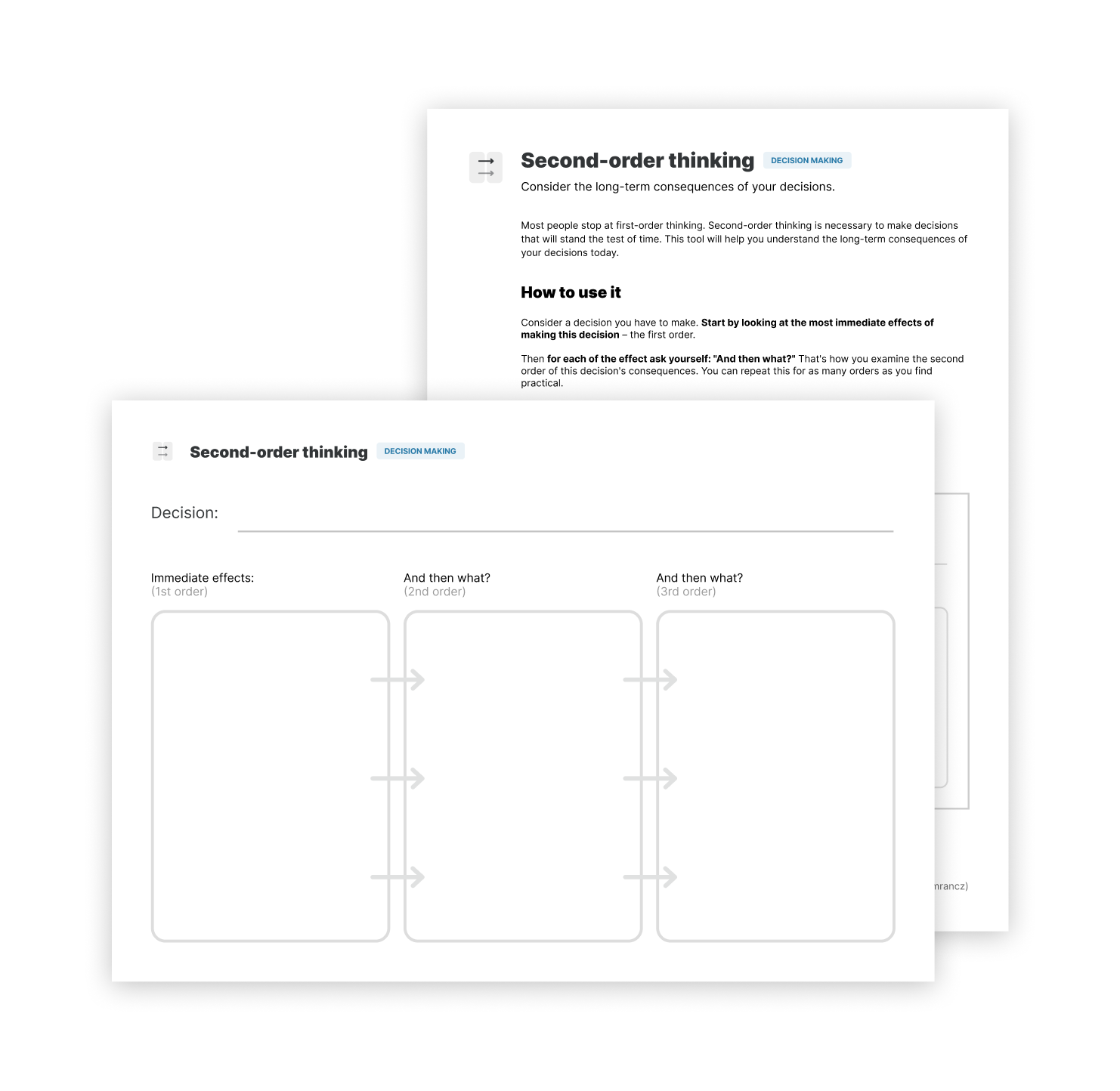Second-order thinking
DECISION MAKINGSome decisions seem like wins at first, but turn out to be losses over time. What seems like an investment now turns out to be a liability later. What looked like a good decision earlier is now a bad one. Second-order thinking is a tool that will help you examine the long-term effects of your decisions.
Most people stop at first-order thinking. Second-order thinking is necessary to make decisions that will stand the test of time. We need to make sure we're okay with more long-term consequences of our decisions today.
How to use it?
Using second-order thinking can be a purely mental exercise or you can write it down on paper.
Consider a decision you have to make. Start by looking at the most immediate effects of making this decision – the first order.
Then for each of the effect ask yourself: "And then what?" That's how you examine the second order of this decision's consequences. You can repeat this for as many orders as you find practical.
Alternatively, think about the decision in different timelines. Ask yourself: What will be the consequences of this decision in
- 10 minutes?
- 10 months?
- 10 years?
This way you can think about the short-term, medium-term and long-term consequences of your decision.
You can apply second-order thinking on big decisions (e.g. buying a house), but also small, seemingly mundane, decisions (e.g. eating a cake). It's a very universal tool that is relevant not just in personal life, but also in business or policy-making.
Second-order thinking in practice
Let's explore what second-order thinking looks like in action. Consider the decision of buying a house outside of the city.
The immediate effects might be having a garden, more space for your family, but also suddenly living an hour away from work.
Now look at higher-order consequences of each:
- having a garden → able to grow your produce → having fresh herbs and vegetables
- more space for family → more rooms to clean → more stress from a messy home
- living an hour away from work → need to buy a car → spending two hours of each day in a car
Obviously, this is just a small subset of consequences for such a big decision, but it shows how second-order thinking can help you see the more long-term consequences. You can now make a more informed and thoughtful decision.
Put this tool to practice
I've created a template (in PDF and Miro) for applying Second-order thinking in practice. It includes a step-by-step reference guide with an example.
You can get it with Untools Vault which gives you instant access to all Untools premium templates and monthly exclusive deep-dives about thinking tools.
Preview of the template and guide:
